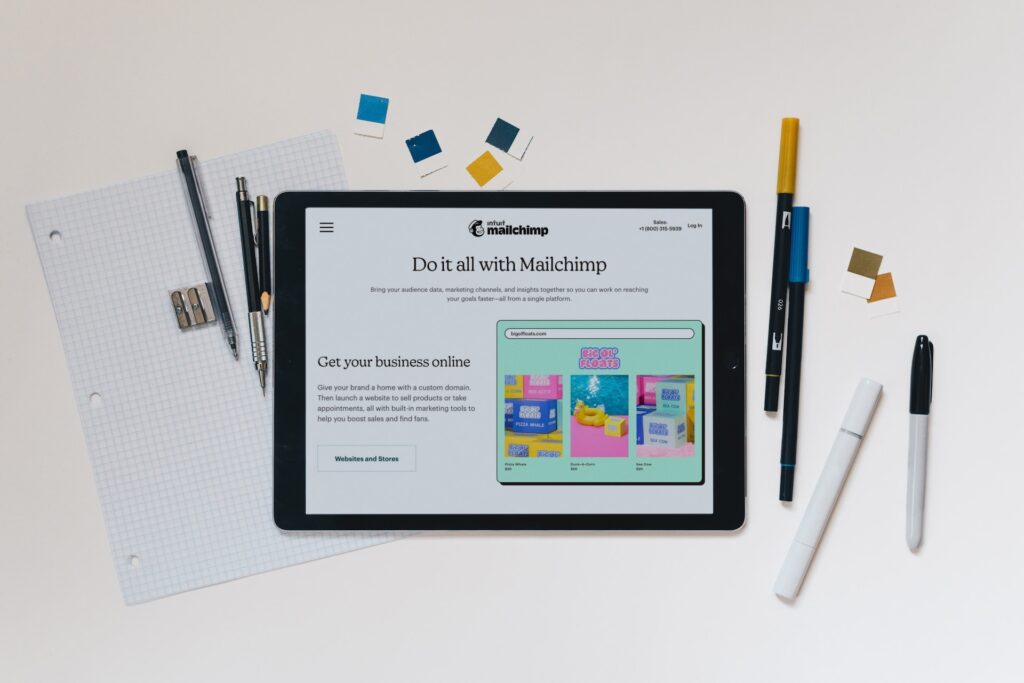The Influence of UX Design on Brand Identity
UX design isn’t a solitary endeavor. It’s a team effort that necessitates close cooperation with disciplines like branding, marketing, and product management. By integrating UX design with the overarching brand strategy, designers can ensure a uniform and cohesive user experience across all touchpoints. Collaborating with branding professionals allows designers to understand the brand’s visual identity, values, and goals, empowering them to convert these insights into meaningful user experiences.
In the current digital era, a brand’s triumph is intimately linked to its proficiency in crafting significant user experiences. User experience (UX) design has a crucial role in molding a brand’s identity, ensuring that interactions with its offerings are seamless, engaging, and reflect its principles. Using a range of disciplines like UI affordances and signifiers, UX writing, interactive design, and more, UX designers can elicit emotions, foster trust, and imprint lasting memories on users. This article will delve into how UX design can metamorphose brand identity, nurture user loyalty, and contribute to business expansion.

The Critical Role of User Research in UX Design
Understanding the users‘ needs, motivations, and behaviors is pivotal to the creation of successful user experiences. This is where user research, an essential part of the UX design process, comes into play. User research allows designers to gain insights into user characteristics, helping them make informed decisions when designing digital products. This article will explore the importance of user research in UX design, its different methods, and how it contributes to enhancing brand identity and user loyalty.
User research helps identify the needs, wants, expectations, and limitations of users. By understanding the user’s perspective, UX designers can create products that are not only functional and usable but also enjoyable. This user-centered approach to design results in higher user satisfaction, which subsequently leads to increased user loyalty and positive brand perception.
User research employs various methods to gather data. These may be qualitative, such as interviews, focus groups, and ethnographic studies, which provide in-depth insights into user behavior and motivations. Alternatively, they may be quantitative, such as surveys and analytics, which provide hard data and trends from a larger user base. Both types of research are valuable and often used in conjunction to offer a holistic understanding of users.
By understanding the needs and expectations of users, company can align their products and services more closely with their target audience. This can enhance the brand identity, making it more resonant with users. Additionally, the insights from user research can help shape the brand’s communication strategy, further reinforcing the brand’s identity and its connection with its users.
User research plays an indispensable role in UX design, bridging the gap between users and the brand. It’s not just about making products that look good – it’s about understanding the people who will use those products, their needs, their behaviors, and their experiences. By prioritizing user research in the UX design process, businesses can create products that truly resonate with their users, leading to a stronger brand identity and enhanced user loyalty.
UI Affordances and Signifiers
A cornerstone of UX design is the incorporation of user interface (UI) affordances and signifiers. These design components serve as visual clues and indicators directing users towards intended actions, improving usability and overall satisfaction. When utilized strategically, UI elements can embody a brand’s character, principles, and unique aesthetics. Aspects like color choice, typography, and visual elements can trigger emotions, cultivate familiarity, and carve out a unique brand identity. By creating a consistent and visually pleasing UI, UX designers can mold user perception and foster connection with a brand.
UX Writing
UX writing, the practice of creating engaging and effective text within user interfaces, is a vital part of UX design that substantially impacts brand identity. Each word, label, or button copy holds the capacity to shape user perception and brand affinity. UX writers meticulously choose language that resonates with the brand’s tone, voice, and target demographic. They compose microcopy that navigates users, imparts crucial information, and adds charm to the overall experience. Expertly crafted UX writing doesn’t just boost usability, but also solidifies a brand’s voice, values, and identity.
Interactive Design
Interactive design involves designing engaging and intuitive exchanges between users and digital interfaces. Through considerate interactive design, UX designers can weave a brand’s identity into the user experience. Interactive components, such as animations, transitions, and feedback, can stimulate emotions, engender delight, and leave a memorable impact. By focusing on how users engage with a brand’s digital offerings, UX designers can generate immersive experiences that underscore the brand’s identity and deepen the user-brand connection.
In the sphere of digital experiences, UX design wields considerable influence in shaping brand identity. By skillfully employing UI affordances and signifiers, UX writing, interactive design, and cross-disciplinary collaboration, UX designers can construct immersive, intuitive, and emotionally engaging experiences that deeply affect users. By leveraging UX design to align with a brand’s values and objectives, businesses can foster strong user loyalty, stimulate brand advocacy, and fuel sustainable growth in an ever-competitive digital environment.



